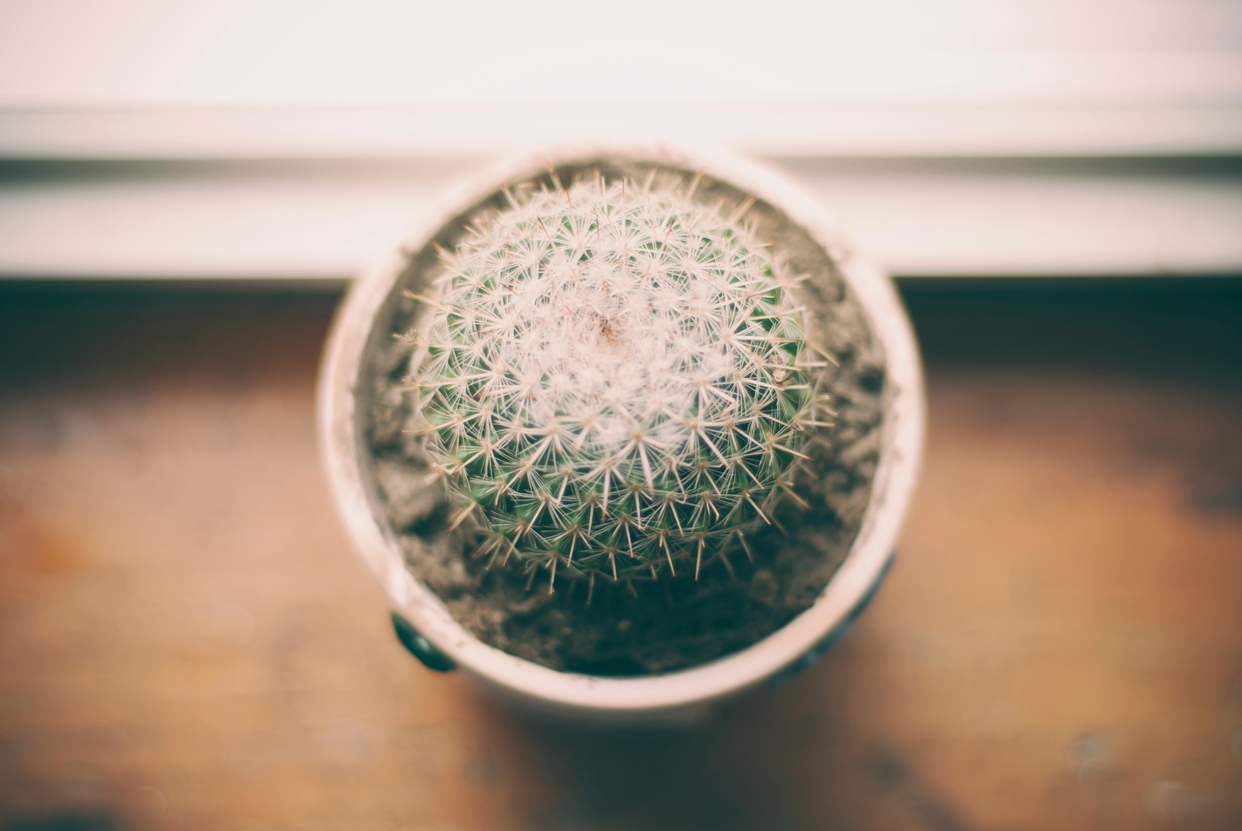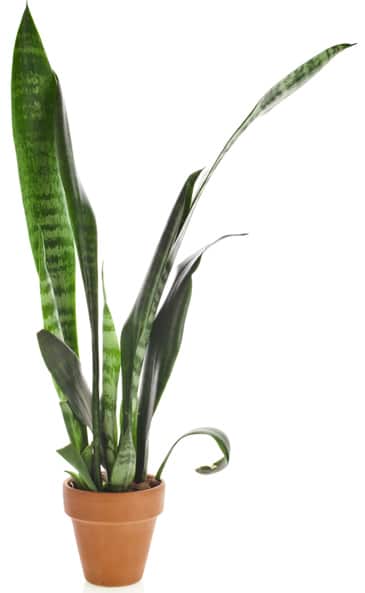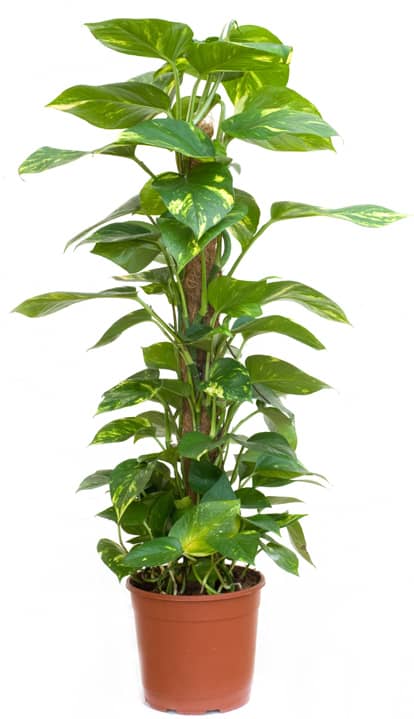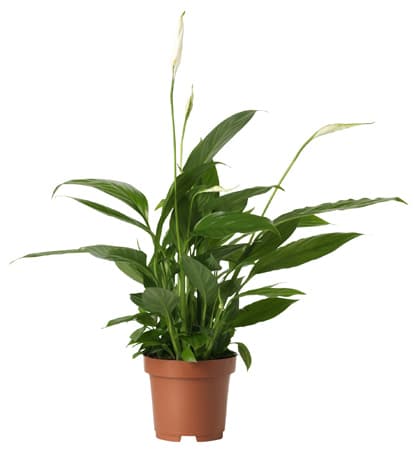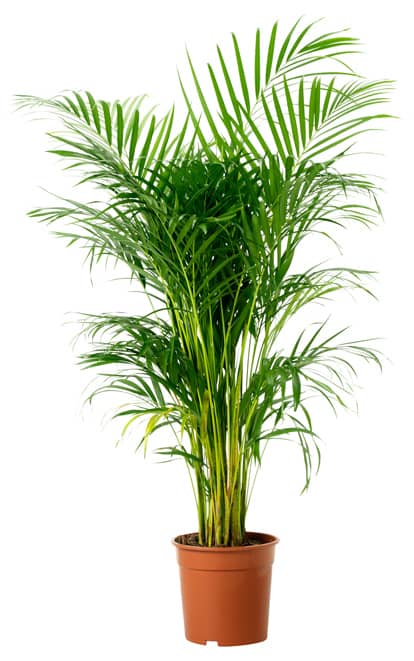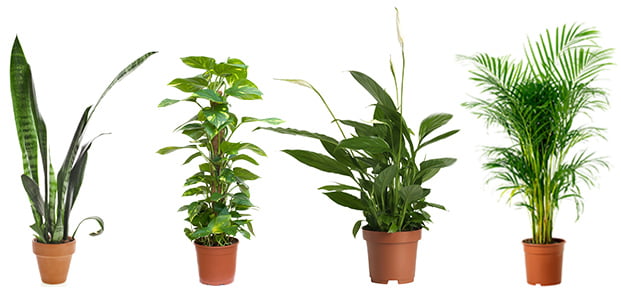4 Powerful Air Purifying Plants
to Clean the Air in Your Home
BY JUSTIN FAERMAN
It’s tempting to think that the air inside your house or office is fresh and clean—after all, it probably doesn’t have any noticeable odor, and if you’re reading this magazine you probably have the windows open every chance you get (weather permitting). But the truth is that indoor air
quality can be, well, deceiving. Unless all your furniture, paint, carpeting and flooring are organic, eco-friendly and pure, chances are there is some moderate to substantial off-gassing going on (off-gassing is when synthetic materials or chemicals naturally degrade, releasing harmful particles into the air).
“The air inside the average home is up to five times more polluted than the air outside”
In fact, according to the U.S. Environmental Protection Agency, the air inside the average home is up to five times more polluted than the air outside. While moderately alarming on a certain level, it’s really more of a catalyst for making positive changes in one’s life that not only freshen up the air, but also allow us to more intimately connect with nature—not merely when we’re outside, but in the comfort of our own living and working spaces. The remedy? Air purifying plants, of course.
The Power of Air Purifying Plants
I remember one night many years ago I came home late from a gathering with some close friends, and being that it was well past midnight, I decided to sneak into bed without turning the lights on. I fell into a deep, peaceful sleep with unusually vivid dreams. I awoke in the middle of the night—my body gently nudging me awake with a primal urge to use the bathroom. When I opened my eyes and took a deep breath I felt so invigorated and rejuvenated that it was absolutely remarkable, especially after only having slept for a few hours. I felt like I could have started my day filled with energy, right then and there, many hours ahead of my normal rising time. But that elation quickly turned to panic as I began to notice a large, black mass just a few feet from my face as my eyes became more sensitive to the darkness filling the room.
I gathered my courage and peered in closer to discover what was next to my bed—to my surprise, a towering bouquet of freshly cut flowers. Relieved, I took a deep breath to relax and noticed how fresh, clean and pure the air around the flowers was. It was literally oozing with oxygen and a light, fragrant scent that I had been unconsciously breathing in that night, which was nourishing every cell of my body as I slept (interesting side note: I later learned that the body’s oxygen demands go up while sleeping).
We had visitors from out of town staying with us who departed before I returned that night, and one of them had left the flowers in their wake. Basking in their afterglow for just a few hours had noticeably improved my health and wellbeing. It was a poignant reminder of the power of plants to not just purify the air, but imbue it with life. I vowed never to be far from plants ever again.
From Toxic to Botanic
But besides providing some profoundly refreshing sleep, can air purifying plants really clean truly toxic air? Can they compete with the brute force of human industry that has caused more environmental destruction than any other force on the planet? In fact, yes. Very much so.
Enter Kamal Meattle, the tenacious, successful CEO of a large Indian software company. Kamal found his health rapidly deteriorating due to the foul air quality in the crowded capital city of New Delhi, India. Not one to sit idly by as his lung capacity precariously dwindled at around 30% of its normal capacity, Meattle began working with the Indian Institute of Technology and The Energy and Resources Institute to expand on NASA air quality research in the hopes he might find a solution to his dilemma.
You see, NASA had a small problem on their hands when it came to long-period manned space missions. They needed an efficient, lasting source of clean air to keep astronauts alive and thriving during extended interstellar travel. What they discovered is that a few common houseplants, and one in particular—Mother-in-Law’s Tongue (botanical name: Sansevieria trifasciata)—did the job wonderfully and were also powerful air purifiers to boot.
Meattle and his team used NASA’s findings to branch out and discover two more air purifying plants that formed a ‘holy trinity’ of clean air. In addition to Sansevieria trifasciata, they discovered that the Areca palm and the superstitiously named money plant, a long wandering vine, also produced copious amounts of clean air while simultaneously removing toxins.
After substantially improving his own health with the combo, in true CEO fashion, Meattle decided to scale up the project and attempt to purify a 20-year-old, 50,000-square-feet building that housed his nearly 300 employees. After some testing and tweaking they discovered that approximately six air purifying plants are required per person to meet their daily needs for fresh, clean, highly oxygenated air.
“Our experience points to an amazing increase in human productivity by over 20% by using these plants. And also a reduction in energy requirements in buildings by an outstanding 15%, because you need less fresh air. We are now replicating this in a 1.75-million-square-feet building, which will have 60,000 indoor air purifying plants,” stated Meattle in a recent TED Talk about his work. Meattle also mentions that these studies “have found that there is a 42% probability of one’s blood oxygen going up by one percent if one stays indoors in this building for 10 hours. The government of India has discovered or published a study to show that this is the healthiest building in New Delhi.”
What You Can Do to Thrive
Clearly indoor plants have immense therapeutic benefits on many levels. The question then becomes which are the most effective at improving air quality and removing toxins (and for some us, which go best with the new rug we just got) Beyond that, each air purifying plant has its own unique ‘personality’, preferring certain conditions over others, so be sure to consider your space and climate in relation to what the plant needs to thrive. That being said, the air purifying plants below are a hardy bunch and can handle a bit of stress and neglect so don’t limit yourself for lack of ‘ideal’ conditions.
Air Purifying Plants
Mother-in-Law’s Tongue
Sansevieria trifasciata
Long, tongue-like leaves with sharp pointed tips earn Sansevieria trifasciata the endearingly euphemistic name of Mother-in-Law’s Tongue, although certain varieties also resemble the geometrically patterned scales of a snake. The sturdy leaves of Sansevieria shoot upwards majestically, with beautiful twists and turns that resemble a mobius strip.
One of the top air purifying plants identified by NASA, Sansevieria removes at least 107 known air pollutants, including carbon monoxide and nitrogen monoxide, formaldehyde, chloroform, benzene, xylene, and trichloroethylene among many others. Sansevieria also produces copious amounts of oxygen throughout the night, making it an excellent plant to keep in the bedroom.
Best of all, Sansevieria is an extremely resilient species that can go for weeks without water and seems to thrive in just about any climate, including those with low light, although they do appreciate direct sunlight and fresh air on occasion, which is characteristic of their native habitat of Madagascar.
Get it Now: Order Mother-in-Law’s Tongue (Sansevieria trifasciata) Shipped Directly to Your Home
Money Plant
Epipremnum aureum
Native to Australia and Asia, the money plant earns its common name from its traditional use as a wealth and prosperity booster in the Chinese system of feng shui, which is the ancient art of harmonizing indoor spaces via the strategic placement of furniture, plants and other common household objects.
Whether or not it brings you greater material abundance, Epipremnum aureum is a powerful air purifying plant that will clean the air in your house very effectively, due to its particular affinity for volatile organic compounds (otherwise known as VOCs) most commonly in the form of off-gassing from synthetic paint or carpets.
With long, wandering vines, don’t be surprised if your Money Plant slowly takes over your room, with vines reaching up to 30 to 40 feet. You can, of course, trim them if you want to keep your plant more modest. Epipremnum aureum does best in rooms with indirect light and requires regular watering. Be warned, however, the leaves of the plant are toxic when ingested and if you have dogs, cats or small children, you may want to keep the plant suspended in a pot well out of reach.
Get it Now: Order a Money Plant (Epipremnum aureum) Shipped Directly to Your Home
Peace Lily
Spathiphyllum
The Peace Lily is a deep, forest green plant with beautiful (although fickle) white flowers. It’s a great general cleanser and air purifying plant that effectively removes all common indoor pollutants generated by furniture, electronics and cleaning products, so much so that it is one of NASA’s top-ranked plants for this purpose.
The Peace Lily does well in indirect light and requires minimal watering with the general guideline being once every four to five days. In hotter climates it may need water more frequently, and you’ll know it’s overdue when the leaves begin to weep.
Get it Now: Order a Peace Lily (Spathiphyllum) Shipped Directly to Your Home
Bamboo Palm
Chrysalidocarpus lutescens
Also known as the Butterfly Palm and the Areca Palm, the Bamboo Palm is another hardy plant native to Madagascar that does an excellent job as an indoor, air purifying plant, with a particular penchant for formaldehydes, benzene and carbon monoxide. As an added benefit beyond air purification, Chrysalidocarpus lutescens is also a natural humidifier, producing a liter of ambient water every 24 hours, making it a well suited plant for dry climates or those with breathing troubles.
Bamboo Palms grow rapidly and can become quite large (up to 20 feet in height), but you can limit their vertical reach by keeping them confined to smaller pots. They prefer bright, filtered light and enjoy being watered frequently when growing, however, in the winter months they tend to need less.
Get it Now: Order a Bamboo Palm (Chrysalidocarpus lutescens) Shipped Directly to Your Home
Ready to Go All Out? Get The Air Purifying Plant Superpack
The good folks over at Emeritus Garden Plants have put together an Air Purifying Plants Superpack that contains all the plants listed in this article for those of you who want to take action now and have them effortlessly delivered right to your front door (and at a great price we might add—buying quality plants like these individually can get expensive quickly).
When it comes to having air cleaning plants in your home, the rule of thumb is the more the better. Each plant pumps out loads of fresh oxygen and cleans toxins and harmful VOC’s out of the air just how nature intended. If you are ready to go all in and upgrade your indoor air quality, exponentially, this is for you.
Get it Now: Order the Air Cleaning Plant Superpack Directly to Your Front Door
About The Author
Justin Faerman has been studying and writing about holistic health practices, herbalism and natural medicine for over 14 years and is a leading authority on both modern and ancient therapies for creating lasting health and wellness. He has a degree in Environmental Science from the University of California, Santa Barbara and has conducted field research into organic and regenerative agriculture practices and eco-social sustainability during his time there. He is also the Founder of Lotus Superfoods, a boutique purveyor of rare herbs and superfoods as well as the Co-founder of Conscious Lifestyle Magazine and the Flow Consciousness Institute. Learn more about his work at flowconsciousnessinstitute.com and lotussuperfoods.com


